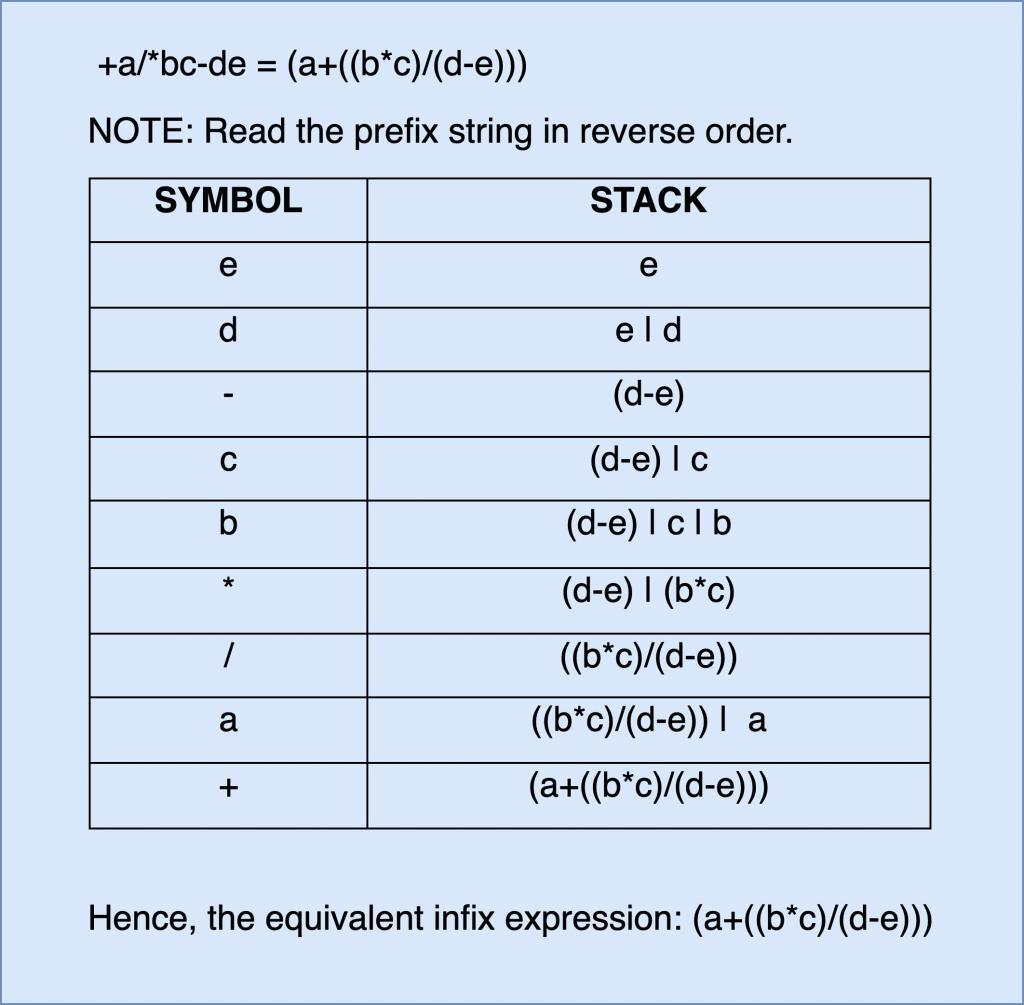
If(opndcnt=1)opndcnt=0 /* operator followed by single operand*/ Printf(" Given Prefix Expression : %s\n",prfx)
#Prefix to infix code

Slightly easier to evaluate in simple circumstances, such as in someĬalculators (e.g. However, Prefix is often used for operators that take a single operandĪlthough Postfix and Prefix notations have similar complexity, Postfix is ((A*B)+(C/D)) ((A*(B+C))/D) (A*(B+(C/D)))Ĭomputer LanguagesBecause Infix is so common in mathematics, it is much easier to read, and You can use a similar trick to convert to and from parse trees - eachīracketed triplet of an operator and its two operands (or sub-expressions)Ĭorresponds to a node of the tree. Repeat this for all the operators in an expression, and finally remove any You can convert directly between these bracketed forms simply by moving the The most straightforward method is to start by inserting all the implicitīrackets that show the order of evaluation e.g.: Operators have to be moved to keep the meaning correct. In all three versions, the operands occur in the same order, and just the The order of evaluation of the operators is not disrupted in the same way as The division (and similarly the addition has to happen before theīecause Postfix operators use values to their left, any values involvingĬomputations will already have been calculated as we go left-to-right, and so Result of the multiplication, and so the multiplication has to happen before In the exampleĪbove, although the division is the first operator on the left, it acts on the Their right, and if these values themselves involve computations then thisĬhanges the order that the operators have to be evaluated in. I haveĪgain added (totally unnecessary) brackets to make this clear:Īlthough Prefix "operators are evaluated left-to-right", they use values to Operators act on the two nearest values on the right. The expressions given above areĪs for Postfix, operators are evaluated left-to-right and brackets are Operators are written before their operands. Prefix notation (also known as "Polish notation"): + X Y Similarly, the "/" uses the result of the multiplication Thus, the "*" uses the two values immediately preceding: "A", and the result We can add (totally unnecessary) brackets to make For example, the "+"Ībove uses the "B" and "C". Operators act on values immediately to the left of them. "*" in the example above, the addition must be performed before the The order of evaluation of operators is always left-to-right, and bracketsĬannot be used to change this order. Operators are written after their operands. Postfix notation (also known as "Reverse Polish notation"): X Y + Say that we perform multiplication and division before we perform addition and Similarly, the usual rules for precedence Perform operations from left to right, so the multiplication by A is assumed For example, the usual rules for associativity say that we Operators clear: rules built into the language about operator precedence andĪssociativity, and brackets ( ) to allow users to override Infix notation needs extra information to make the order of evaluation of the "First add B and C together, then multiply the result by A, then divide

This is the usual way we write expressions. Operators are written in-between their operands. It is easiest to demonstrate the differences by lookingĪt examples of operators that take two operands.

Infix, Postfix and Prefix notations are three different but equivalent ways of Infix, Postfix and Prefix UP Infix, Postfix and Prefix


 0 kommentar(er)
0 kommentar(er)
